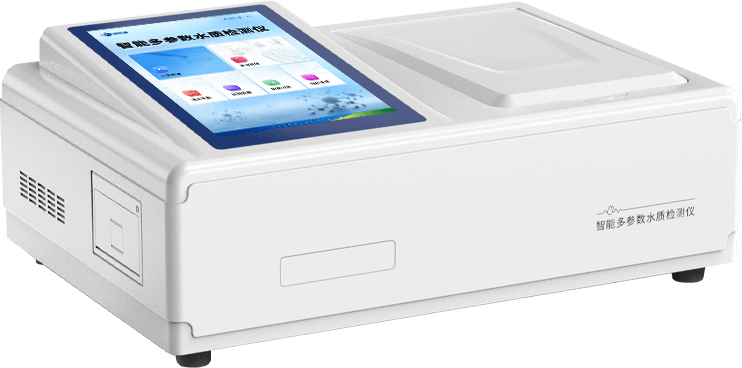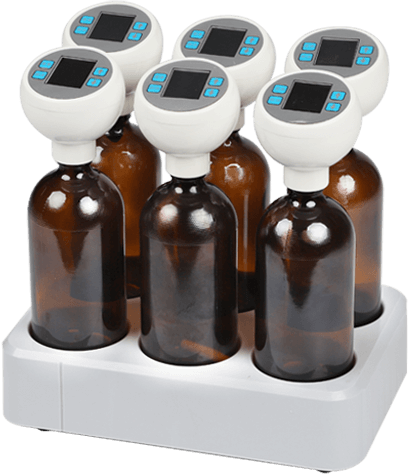
Portable infrared oil analyzer
- Product Number:LD-CY2
- Product Difference:Used for emission testing of mineral oils and animal and vegetable oils in surface water, groundwater, domestic sewage, industrial wastewater, soil, and oil fumes and oil mist in exhaust gases
Product Introduction
Oils are viscous liquids that are insoluble in water but selectively soluble in organic solvents, with a relative density generally less than 1. They are classified into petroleum oils and animal/vegetable oils. Petroleum oils are complex mixtures composed of hydrocarbon compounds of varying molecular sizes, containing small amounts of sulfur, nitrogen, and oxygen-containing organic compounds. The composition of petroleum varies by region and does not have a fixed chemical composition or physical constants. Carbon and hydrogen dominate, accounting for 95% to 99% of the total, primarily existing in the form of hydrocarbons, which constitute the main component of petroleum. Hydrocarbons are composed of alkanes, cycloalkanes, and aromatic hydrocarbons. The content of oxygen, sulfur, and nitrogen accounts for 1% to 4%, primarily existing in the form of compounds. Sulfur-, nitrogen-, and oxygen-containing compounds are mostly concentrated in residual oil, pitch, or asphalt.
Oils are composed of various hydrocarbons formed by CH, CH₂, and CH₃ groups, which are inherent characteristics of various oil products. Compounds formed by CH, CH₂, and CH₃ groups represent the overall oil category. Due to the replacement of carbon tetrachloride with tetrachloroethylene, some definitions need to be revised as follows: “Substances that can be dissolved by tetrachloroethylene, have characteristic absorption at wavenumbers (3030 cm-1, 2930 cm-1, 2960 cm-1), and have their infrared background absorption values subtracted are referred to as oils.”
The wavenumbers (3030 cm-1, 2930 cm-1, 2960 cm-1) correspond to the infrared characteristic absorptions of CH, CH₂, and CH₃, respectively. CH, CH₂, and CH₃ are inherent characteristics of all types of oils worldwide. By measuring the bond energy (absorbance) of CH, CH₂, and CH₃ in the sample, the oil content in the sample can be determined. The portable infrared oil analyzer utilizes these characteristics of oil to measure its absorbance at three wavenumbers (3030 cm-1, 2930 cm-1, and 2960 cm-1), thereby enabling quantitative analysis.
The portable infrared oil analyzer complies with the following national standards: HJ637-2018 Water Quality—Determination of Petroleum and Animal/Vegetable Oils by Infrared Spectrophotometry,“ ”HJ1051-2019 Soil—Determination of Petroleum by Infrared Spectrophotometry,“ and ”HJ1077-2019 Fixed Pollution Source Exhaust—Determination of Oil Fumes and Oil Mist by Infrared Spectrophotometry."
The portable infrared oil analyzer can be used for emission testing of mineral oils and animal/vegetable oils in surface water, groundwater, domestic wastewater, industrial wastewater, soil, as well as oil smoke and oil mist in exhaust gases. It is suitable for environmental monitoring stations, hydrological stations, petrochemical industries, machinery, automobile and aircraft manufacturing enterprises, as well as industries such as pharmaceuticals, agricultural technology, and marine transportation.
Product Features
The instrument employs the calibration coefficient method specified by national standards for detection principles, strictly adhering to the standard formulas outlined in national standards. Calibration is performed using 20 mg/L n-hexadecane, 20 mg/L iso-octane, and 100 mg/L benzene, with the calibration coefficients calculated from the calibration formula applied to measure the sample. Alternatively, the standard curve method can be used for detection.
Robust backend data support: After testing samples, users can not only print results via a printer and save them locally but also upload them to the cloud platform database via Wi-Fi or 4G connectivity.
The instrument operates on the mainstream Android 7.1 system with an 8-inch color touchscreen, enabling all instrument functions to be controlled via touchscreen—convenient, quick, and as easy to use as a smartphone.
Highly automated program application: Users can perform individual tests of all instrument functions via the Android system, including automatic wavelength scanning and automatic correction, ensuring more accurate data detection.
Built-in wireless network functionality, compatible with external Wi-Fi connections, enabling online data upload functionality.
Internal 16GB storage capacity, capable of storing over 1 million data points, with data exportable via USB drive.
Utilizes an electronically modulated light source, reducing heat generation for improved system cooling, while simplifying instrument structure and enhancing reliability by minimizing mechanical light-cutting components.
Automatically synchronizes with network time to prevent inaccuracies in output certificate timestamps caused by prolonged instrument use leading to local time discrepancies.
In addition to basic functions such as detection settings, curve analysis, and historical data, it also supports spectrum zoom in/out, allowing users to infinitely refine the spectrum for clearer observation of curves at low concentrations.
Real-time automatic zero adjustment: the instrument simultaneously collects signals when the light source is on and when it is off, enabling real-time automatic zero adjustment, thereby simplifying operations and improving long-term signal stability.
Removable integrated optical system: this design results in a compact instrument size, short optical path, and high energy output. The optical path meets the requirements of infrared spectroscopy, ensuring high stability and a high signal-to-noise ratio.
One-click program upgrade functionality eliminates the need for on-site engineer downloads; the app can be upgraded by inserting a USB drive.
Product parameters
| Instrument detection limit | DL ≤ 0.04 mg/L (3 times the standard deviation of 11 blank measurements of tetrachloroethylene) |
| Method detection limit | 0.06 mg/L; when the sample volume is 500 ml and the extraction liquid volume is 50 ml (HJ637-2018 standard) |
| Minimum detection concentration | 0.003 mg/L |
| Sample measurement range | 0–100% oil (Enrichment and dilution) |
| Basic measurement range | 0.0–800 mg/L |
| Repeatability | RSD ≤ 0.6% (11 measurements of oil samples at 30–80 mg/L) |
| Accuracy, error | ≤2% |
| Correlation coefficient | r > 0.999 |
| Scan speed | Full spectrum scan, fast mode 45 seconds per scan, Precision mode: 3 minutes per scan |
| Wavenumber range | 3100 cm⁻¹ to 2800 cm⁻¹ (i.e., 3200 nm to 3570 nm) |
| Absorbance range | 0.0000 to 2.0000 AU (i.e., transmittance 100% to 1%T) |
| Spectral accuracy | 2 nm |
| Temperature and humidity range | 1°C to 40°C, humidity ≤ 90% |
| Main unit dimensions | 500 mm × 350 mm × 200 mm (length × width × height) |
| Power supply | 100–240 V, (50 ± 1) Hz, 50 VA |

 +86 19353291814
+86 19353291814
 +86 19353291814
+86 19353291814


